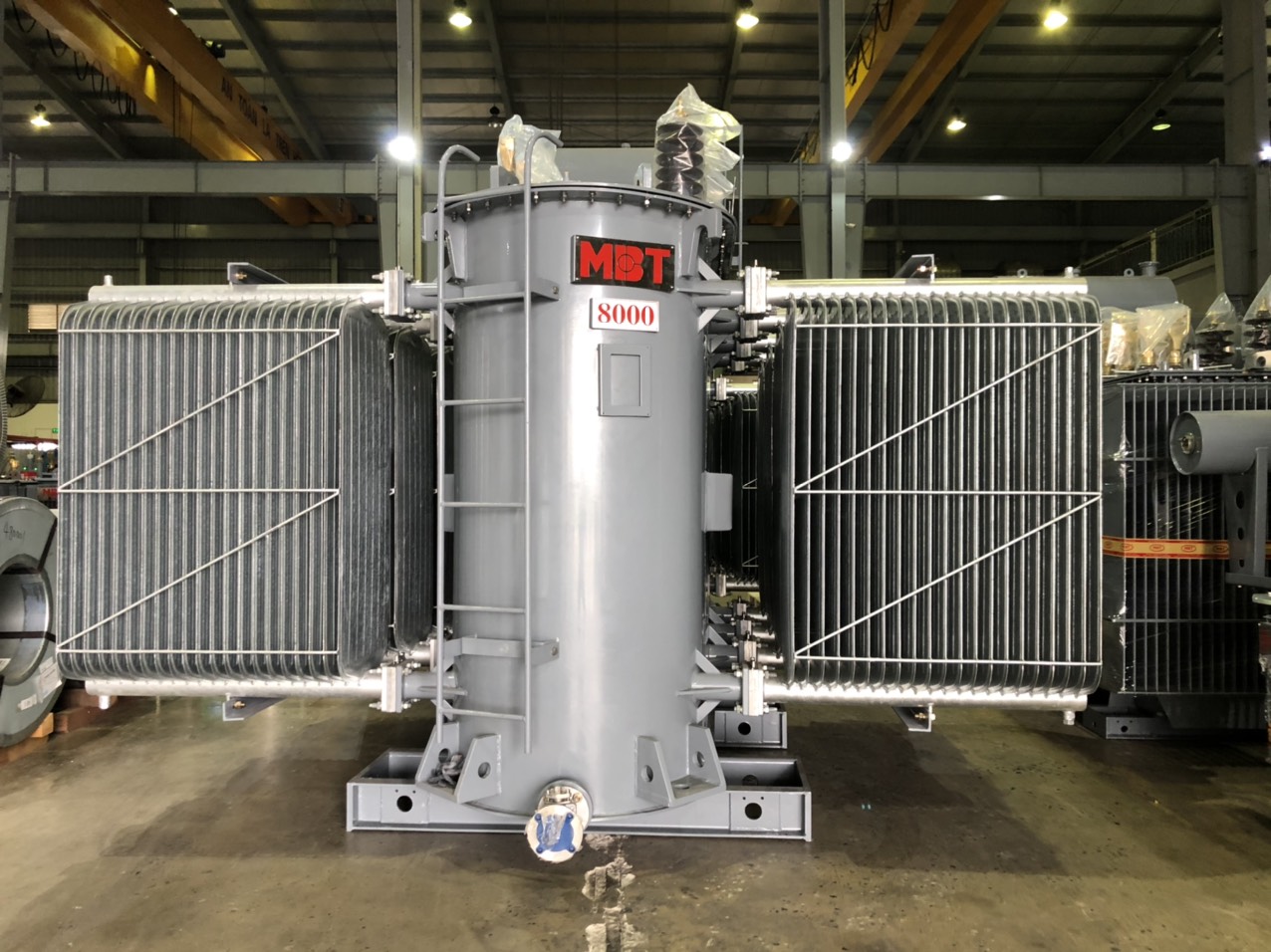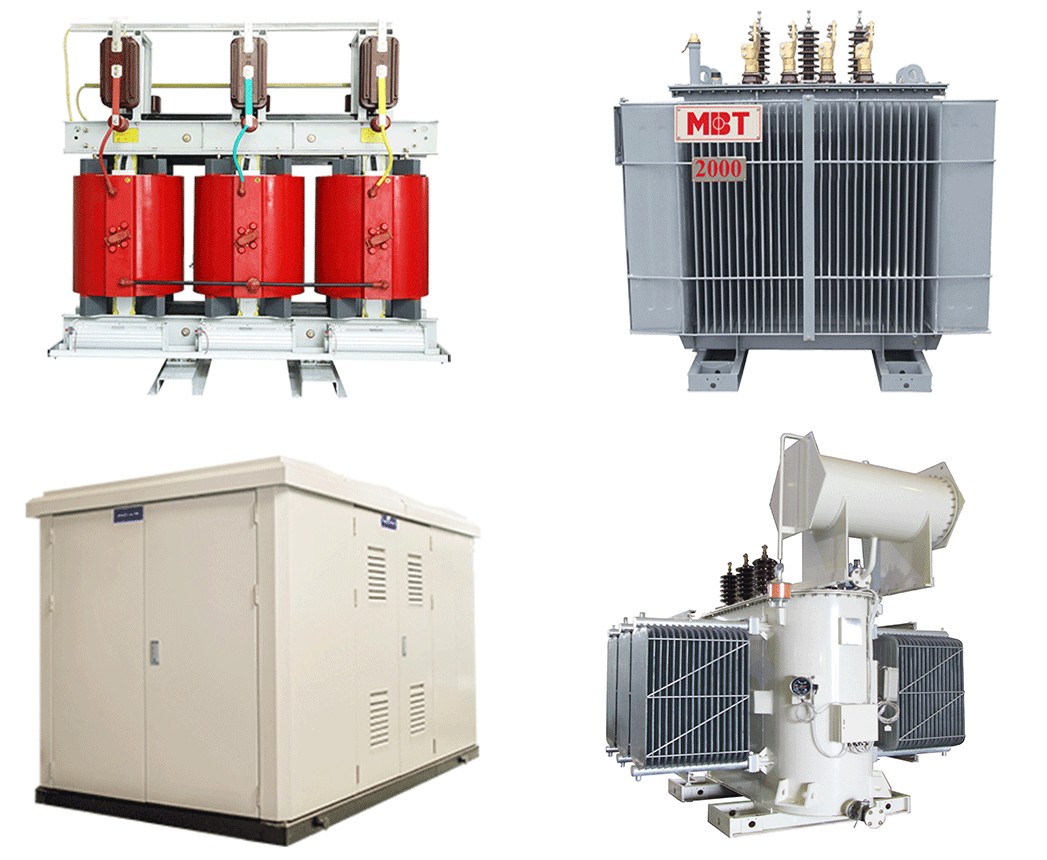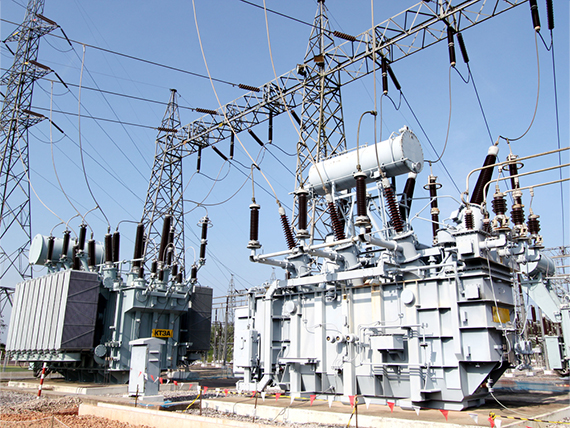What is the difference between Power Transformers and Distribution Transformers?
Here we will discuss the difference between the Power transformer and the distribution transformer. The difference is classified based on the type of power grid used, installation location, usage for low or high voltage, the different ratings in which the power transformer and distribution transformer are available on the market.
Main differences: Transformer Rating
Power transformers used in transmission networks have higher voltages for step-up and step-down applications (400 kV, 200 kV, 110 kV, 66 kV, 33kV) and are typically rated above 200MVA.

MBT Transformer
Distribution transformer is used for lower voltage distribution networks to connect end-users (11kV, 6.6 kV, 3.3 kV, 440V, 230V) and generally rated below 200 MVA.
Transformer Size / Electrical Insulation Level:
Power transformers are used for the transmission purpose at heavy loads, the high voltage over 33 kV & 100% efficiency. It is also larger than distribution transformers. It is used in power generation stations and transmission substations. These transformers have a high degree of electrical insulation.
Distribution transformers are used to distribute electrical energy at a low voltage below 33KV for industrial purposes and 440v-220v for domestic purposes. It works with low efficiency at 50-70%, small size, easy to install, low magnetic loss, and is not always fully loaded.
Iron Losses and Copper Losses
Power transformers are used in the transmission network, so they are not directly connected to the consumers, so there is minimal load fluctuation. They are fully charged for 24 hours a day, so Cu losses and Fe losses occur throughout the day, i.e., specific gravity (iron weight) / (copper weight) is very little.
The average loads are close to full or full load, and these loads are designed for maximum efficiency at full load. They do not depend on time, so inefficiency calculation only capacity base is sufficient.
The distribution transformer used in the distribution network should be directly connected to the consumer, so the load fluctuates very high. These are not fully loaded all the time, so iron losses occur 24 hours a day, and copper losses occur based on the more significant specific gravity load cycle, i.e. (iron weight) / (copper weight). The average load is only about 75% at full load, and they are designed so that maximum efficiency occurs at 75% at full load.
As these are time-dependent, the all-day efficiency is defined to calculate the efficiency.
Power transformers are used to transmit as an upgrade device that can minimize the I2r loss for a given current. These transformers are designed for maximum core utilization and will operate very close to the BH curve's knee point (slightly higher than the knee point value). This reduces the mass of the core significantly.
Naturally, these transformers have corresponding iron and copper losses at the highest load (i.e., the maximum efficiency point where both losses match).
The distribution transformer obviously couldn't be designed like this. Hence, all-day efficiency comes into the picture while designing it. It depends on the typical load cycle it has to deliver. Indeed, the core design will be done to handle the highest load and all-day performance. That's a bargain between these two points.
Power transformers usually operate in full load mode. Hence, it is designed such that the copper loss is minimal. However, the Distribution transformer is always online and operates at less than full load most of the time. Hence, it is designed such that the core loss is minimal.
The flux density of a power transformer is higher than that of a distribution transformer.
Maximum Efficiency
The main difference between the distribution transformer and power transformer is that the distribution transformer is designed for maximum efficiency at 60% to 70% load because it usually doesn't work at full load all the time. Its payload depends on the demand for distribution. Meanwhile, the power transformer is designed to be at maximum efficiency at 100% load as it is always running at 100% load near the generating station.
Distribution transformers are used at distribution levels where voltages tend to be lower. The secondary voltage is almost always the voltage supplied to the end consumer. Due to voltage drop limitations, it is often impossible to supply that secondary voltage over large distances.
Consequently, most distribution systems involve multiple 'clusters' of load fed from the distribution transformer, which means that the distribution transformer heat rating is not too high to support the load they must serve.
Transformer Quotations

MBT is a brand of transformer products that have a high reputation in the market. With the strength of experience and technological lines in manufacturing, a good team of engineers, skilled technical workers, and abundant customer partners in many areas, so we are always leading about quality of service and price.
We design, manufacture, and supply all kinds of electrical transformers with a dedicated project manager and a 24-month guarantee from dispatch.
With the business motto: "A satisfied customer is the best business strategy of all," and over 11 years of experience in transformer design and manufacture. We, MBT, are confident of being the best transformer manufacturer in Vietnam.
Contact immediately +84913 006 538 or email: info@mbt.vn for a free consultation and support and receive the most preferential quotation.

